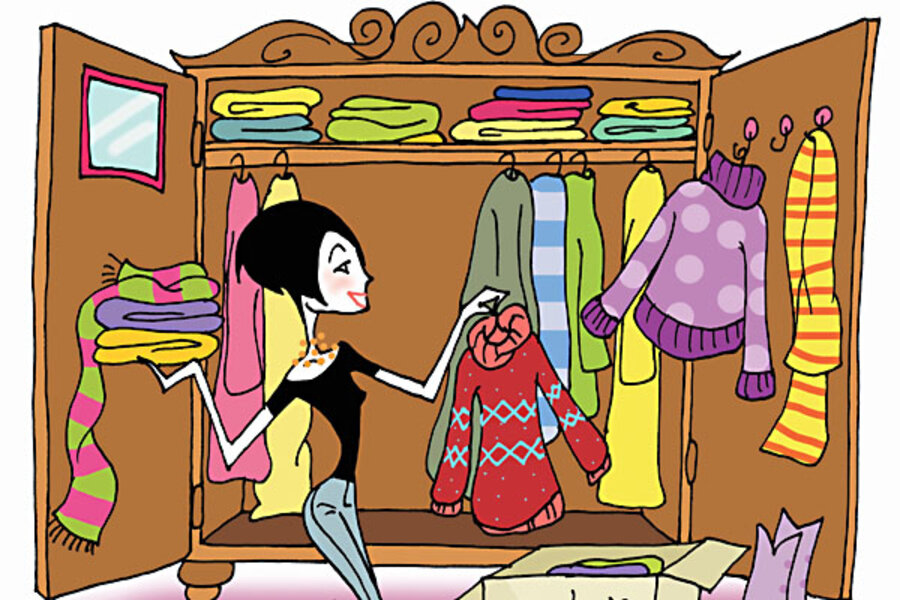Clean out your closets and liquidate
Loading...
7. Clean out your closets and liquidate.
Even after a few rounds of doing this very thing, our closets are still loaded with stuff. Accumulated but largely unwanted Christmas presents. Old baby clothes. Old CDs. Unused blankets. Art projects abandoned. Books that have been read that we haven’t listed on PaperBackSwap yet. The list goes on and on.
Once every year or two, Sarah and I spend a weekend or so cleaning out closets. We pull everything out of them, then go through everything. Do we really need to keep this? Are we really ever going to look at this again?
We usually end up with a big pile of unwanted stuff that is destined for either the trash bin or, more importantly, some form of resale or trading. Even better, our closets find themselves much more empty, with plenty of room and with the items inside much more organized and easy to access.
Not only that, the whole process feels very cathartic. It gets frustrating when our closets become full enough that we’re unable to find things when we’re looking for it and it’s also a bit unsettling to have that much stuff that’s utterly unused. Cleaning out our closets takes care of both of those problems, gives us a day or two of enjoyable activity, and often results in some extra cash in our pocket.
Cleaning Things Out
Our approach is really straightforward. We put aside either a long day or two shorter days, then designate what closets we’re going to clean out.
Our first step is to completely empty out the closets. We usually pile all the stuff into one big pile in our family room as best we can. We don’t ask questions about the item – the purpose of this step is to just get everything out and accessible.
After that, we start separating the stuff into piles. We do this by evaluating each item. The big question: are we going to keep it? If the answer is yes, we usually go put the item outside the closet from which it came. If the answer is no, we ask ourselves if the item has any real resale value. Could we get something for it on Craigslist or at a consignment shop or on eBay or in a yard sale?
If it has resale value, we put it in one pile. If it doesn’t have value, we usually throw it away unless we think someone might want the item, in which case we’ll hold onto it until we can check with that person.
You need to be realistic with this process. If you haven’t touched an item in years, get rid of it. At the least, it’s taking up closet space. Often, it’s holding some value as well, value that can be used in a better way in your life.
Dealing with the Unwanted
So, how do you handle that pile of stuff that you think has value but that you don’t want?
There really are a lot of options. Generally, the more time you invest in a particular option, the more cash you’ll get from that option. Here are a few that we use.
Craigslist Just toss up some entries for your items, put a default price “or best offer” on each one, and see what you get. Often, people will come to you to get the item, which makes this easy. Ebay is similar to this – you’re likely to get a bit more per item, but you have to deal with shipping the items.
Yard sale This is usually the best route for getting rid of unwanted non-high-end clothes and other general items. We usually put out items at a high price starting on Friday, then gradually lower them throughout the weekend until we’re nearly giving the stuff away on Sunday.
Consignment If you have some high-quality clothing items, you might have more success with a consignment shop than with the above methods. This is usually as easy as driving there, talking over terms with the shop owner, and then waiting.
PaperBackSwap This is where most of our unwanted books go. We simply swap read books for unread ones of our choosing.
Clean out your closet. It’s cathartic, it can free up space, and it can also put some money right into your pocket.
Add/view comments on this post.
------------------------------
The Christian Science Monitor has assembled a diverse group of the best economy-related bloggers out there. Our guest bloggers are not employed or directed by the Monitor and the views expressed are the bloggers' own, as is responsibility for the content of their blogs. To contact us about a blogger, click here. To add or view a comment on a guest blog, please go to the blogger's own site by clicking on the link above.





